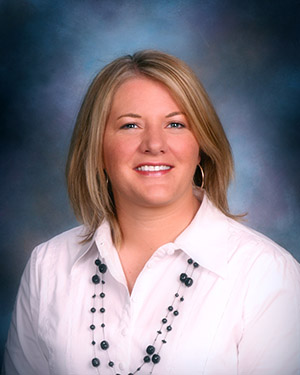I still remember the shock on March 13, 2020, when we sent students home to complete the year online. Looking back, these last 16 months have been beyond stormy—just one wave after another as we battled to support teachers, support our school community, support our students, and somehow find something that supported ourselves. Throughout this challenging time, there are four things that anchored me throughout the storm.
Anchor 1: Trusted Colleagues

I work in a district with eight middle level schools. These middle level principals kept me afloat. Whenever the going got tough, I reached out to one of them. To be honest, there was some venting, but these colleagues gave me the underpinning I needed to move forward. We met regularly (through Zoom). We brainstormed issues and solutions. We created, revised, and refined various school plans and structures as we anticipated the return of students. We listened to each other. We questioned each other. We commiserated with each other. And through this storm, I found a sounding board and support.
Similarly, our state board is building a Principals Partnership Network. This puts us in contact with a small group of administrators from various schools across the state. We meet each month to share challenges and solutions, input, and ideas. There is an assigned facilitator who runs a problem-solving protocol, but the topics and discussion come from the principals in our group. I always come away from those meetings inspired with small shifts I could make to impact me and my school in positive ways.
Anchor 2: Clear and Consistent Communication
Whether we were meeting on Zoom or in person, communication with my staff was a key throughout the pandemic. Initially we set up a Google Doc to track all the new things that were coming and dates and times. We then created a Google Doc that was a question-and-answer sheet to keep up with how the new things impacted our school. When students were at home last spring, we held weekly Zoom faculty meetings—partially just to see one another and answer questions or collect questions that we needed answers to. I continually asked our staff for feedback on our communication. Transparency—even when I did not have an answer—was key.
Looking back at the various communication challenges, we were able to refine lines of communication. My administrative team now has a weekly document (an idea from our Principal Partnership Network meeting) where we track what we need to share immediately, what we are working on, what we need to gather more information about, and what we need to share with the faculty on Fridays. At the bottom is an email we build all week and then send out on Friday. Every Monday, our admin team reviews and revises this document, and every Friday I send an update email, The Week’s End, to our staff. Staff can read it Friday or Monday. This routine of collecting and sorting information helps our admin team stay on the same page and provides consistency to our staff both in the timing of information and the actual information.
Anchor 3: Learning/Reflecting About Your Leadership
Leadership is ever evolving. Just look at the books, articles, blogs, and podcasts flooding the market. Wherever you look, someone is redefining leadership. This provides all leaders an opportunity to gather ideas or ponder a different approach. Structure vs. flexibility? Tight vs. loose? Where do I draw my lines? And the pandemic certainly provided opportunities to examine my own leadership style and patterns.
I have been a middle level principal for 15 years. This year, I had to rethink how I connected with my staff. An idea from a colleague led me to set aside a day every three weeks just for staff. They were the priority. No parent meetings, no student meetings, just staff. I was in my office to meet in person or through Zoom. Staff members could drop by or schedule a specific time. This allowed for some personal and tender conversations and connections that impacted me and my staff.
Reflection on leadership can happen in both formal and informal structures—a weekly or daily reflection journal, a book study, online classes, PD, specific work through social media sites, or blogs. For me, it often occurs in a quiet moment when driving home or to another meeting as I listen to an audiobook or a podcast. As I am in meetings and an idea I want to ponder occurs, I just write it down. I end up with lists of ideas, and when I find a quiet moment, I process some, cross off others, and find one or two I want to run with and ponder more deeply.
Reflection for me also occurs within specific discussions. Every week, I try to have a one-on-one conversation with each of our assistant principals, our teacher coach, and at least two faculty members. I ask variations of: How are things going? What is the biggest thing on your plate? How can I help or support you? What are you excited about? These conversations go in a million directions, but they give me a better sense of what other people are seeing and doing. I consider the tasks I am asking of others, the purpose of the work, and our anticipated outcome as I try to see them through different perspectives. These conversations have added to bigger discussions about what to refine in our building and how to move forward. As we shift to the end of the pandemic and unfinished learning, moving forward is our new—and daunting—task.
Anchor 4: Life/Work Balance
While I admit my life/work balance has been off during this pandemic, it is moments with family or friends that allow me to relax and restore my stamina and strength for another week at school. It seems like 16 months since any of us have had a real vacation or extended time away, but those small moments can provide necessary stress relief that gets us through the storm. Biking, hiking, cooking, laughter, and family time are mine. Sometimes I just try a new recipe hoping to find something successful or laugh at the failed outcome. This past year I have also tried to add some yoga.
We each need to find things that help our minds and bodies shed the daily stress of leadership. If you are not taking care of yourself, you limit your capacity to handle the normal stress of the day—not to mention the crazy stress of the pandemic. Find those smaller things that release your stress each day. It might be exercise, a tech-free dinner with your family, journaling about your day, writing in a gratitude notebook, talking to a close friend and laughing, taking a walk with a loved one or pet, or dancing it out. It doesn’t have to be big; it just has to be a release.
Leadership is hard. After this year, we all know at a deeper level there will be challenges we see and are prepared for and challenges that are unexpected. I encourage you to identify and develop structures that give you support and inspiration to keep moving. Your efforts make a difference. One of my favorite quotes sits on my desk and helps me to focus on what I can do.
“I am only one, but I am one. I cannot do everything, but I can do something.
And I will not let what I cannot do interfere with what I can do.”
—Edward Everett Hale


1 Comment
This is great! Any chance I could see an example of a few of your weekly documents that your team works on and sends out??